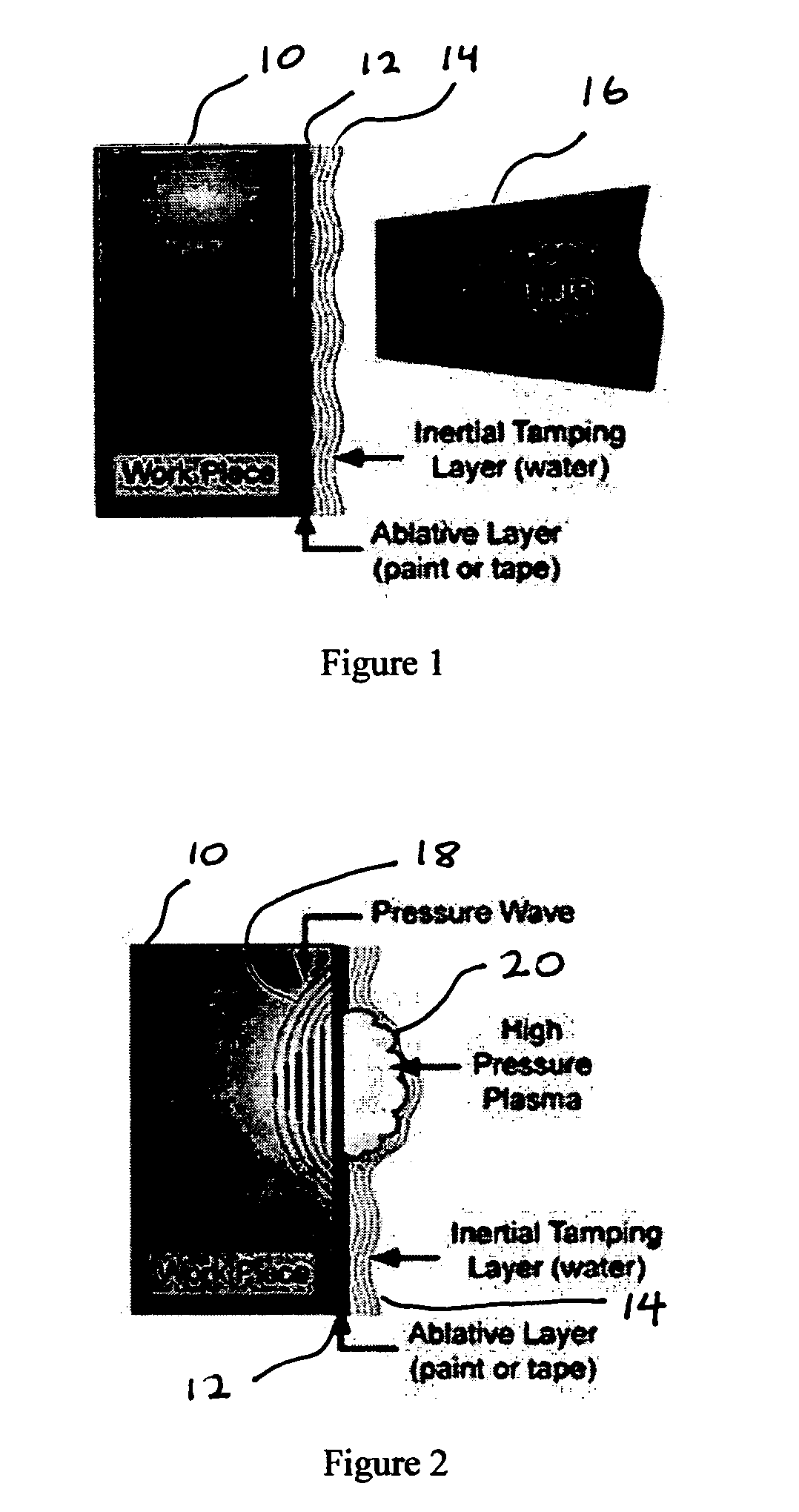Laser peening for reducing hydrogen embrittlement
- Summary
- Abstract
- Description
- Claims
- Application Information
AI Technical Summary
Benefits of technology
Problems solved by technology
Method used
Image
Examples
Embodiment Construction
[0034] Deleterious effects due to hydrogen embrittlement can be significantly reduced by applying a process that densifies the material deeply beyond the surface, cutting off penetration paths for the hydrogen and at the same time induces compressive stress to retard propagation of cracks created locally by hydrogen induced internal flaws.
[0035] As such, a laser peening process that simultaneously induces residual stress and increases the density of the material as deeply as possible in the near surface material with minimal generation in intergranular disruptions will be the preferred approach to minimize the penetration of hydrogen. Consequently a laser peening process which peens with a long pulse (greater than 20 ns), with a large footprint (greater than 20 mm2 area) and with repeated applications (3 or more layers of peening) will have the best performance in retarding hydrogen penetration and thus hydrogen embrittlement.
[0036] Since the intense laser-generated shock front is...
PUM
| Property | Measurement | Unit |
|---|---|---|
| Length | aaaaa | aaaaa |
| Length | aaaaa | aaaaa |
| Fraction | aaaaa | aaaaa |
Abstract
Description
Claims
Application Information
 Login to View More
Login to View More - R&D
- Intellectual Property
- Life Sciences
- Materials
- Tech Scout
- Unparalleled Data Quality
- Higher Quality Content
- 60% Fewer Hallucinations
Browse by: Latest US Patents, China's latest patents, Technical Efficacy Thesaurus, Application Domain, Technology Topic, Popular Technical Reports.
© 2025 PatSnap. All rights reserved.Legal|Privacy policy|Modern Slavery Act Transparency Statement|Sitemap|About US| Contact US: help@patsnap.com



